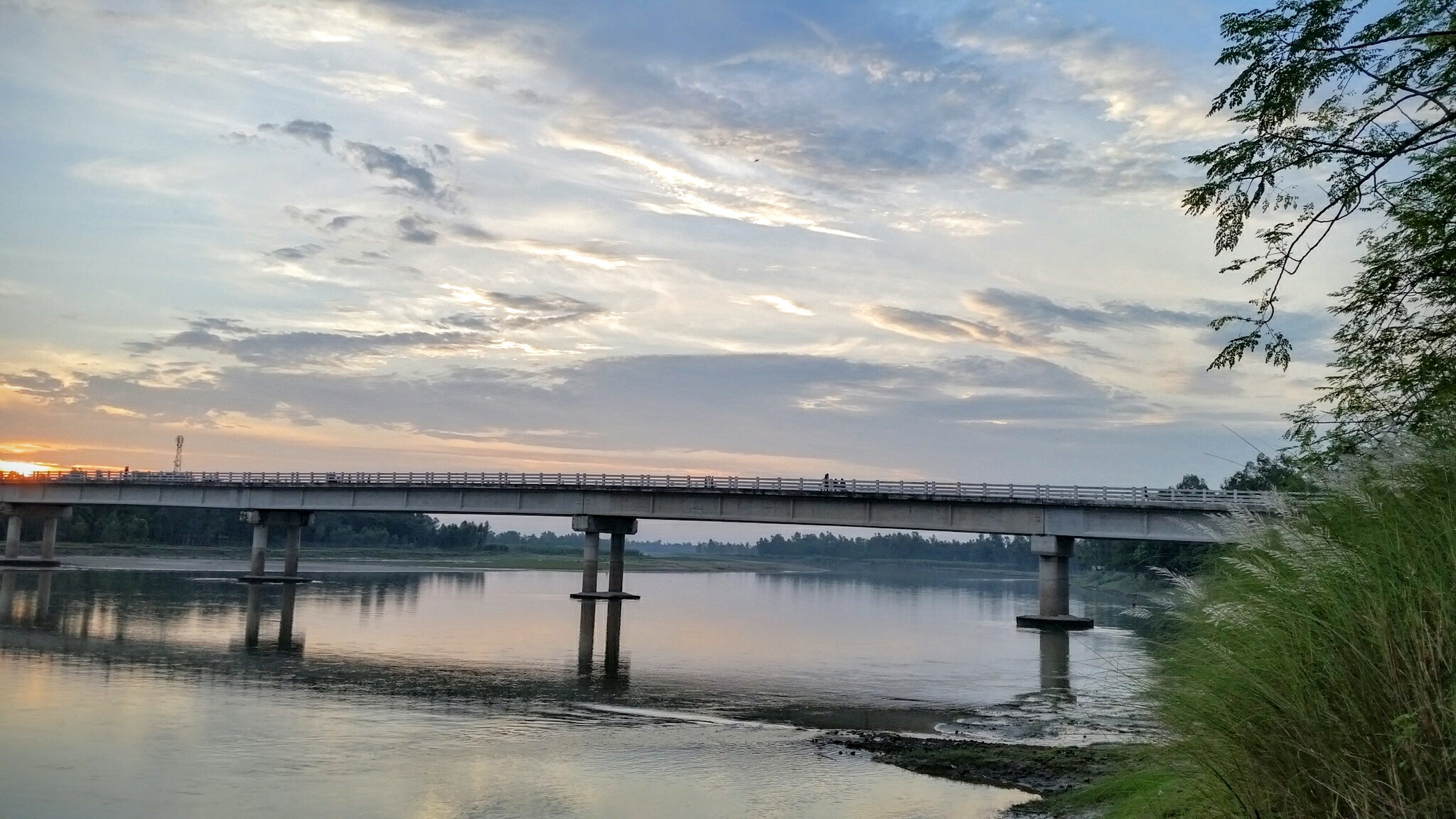Karatoya on:
[Wikipedia]
[Google]
[Amazon]
Karatoya River (also spelt Korotoa River) is a small stream in 
 The Karatoya is one of the rivers that has changed over the years. Previous rivers that the Karatoya connected to include the
The Karatoya is one of the rivers that has changed over the years. Previous rivers that the Karatoya connected to include the
Rajshahi Division
Rajshahi Division ( bn, রাজশাহী বিভাগ) is one of the eight first-level administrative divisions of Bangladesh. It has an area of and a population at the 2011 Census of 18,484,858. Rajshahi Division consists of 8 district ...
of Bangladesh
Bangladesh (}, ), officially the People's Republic of Bangladesh, is a country in South Asia. It is the eighth-most populous country in the world, with a population exceeding 165 million people in an area of . Bangladesh is among the mos ...
.

Etymology
The name of the river is formed of two Sanskrit words ''kar'' (hand) and ''toa'' (water).Course
The Karatoya, known as Phuljhur rises in the Baikunthapur jungles in the extreme north-west of Jalpaiguri district (West Bengal, India) and forms for some distance the boundary between Dinajpur and Rangpur districts. It, then, meanders through Rangpur and Bogura. In the south of Bogura district, it receives the Halhalia and the united stream is then known as Phuljhur. It leaves Bogura at Chanda kona and flowing in a southerly direction past Raiganj and Shujapur is joined by the Ichhamati at Nalka. The Phuljhur then flows south past the important village of Ullapara, a few miles below which it joins the Hurasagar at Narnia after a course of about in this district. After this junction, it takes the name of Hurasagar and passing close by Shazadpur and Hera joins the Jamuna near Bera.Course changes
 The Karatoya is one of the rivers that has changed over the years. Previous rivers that the Karatoya connected to include the
The Karatoya is one of the rivers that has changed over the years. Previous rivers that the Karatoya connected to include the Teesta
Teesta River is a long river that rises in the Pauhunri Mountain of eastern Himalayas, flows through the Indian states of Sikkim and West Bengal through Rangpur, and enters the Bay of Bengal. It drains an area of . In India, it flows through ...
and Kosi rivers.
The map (''right'') shows the main rivers in North Bengal and adjoining areas. Not shown are numerous tributaries and distributaries, which connect the main rivers, and allow the main rivers to change course. Therefore, the river-system pattern undergoes continuous changes. Such changes have not been reflected in the map. Moreover, many of the rivers have local names for sections of the course, adding to the complexity of the river system.
The Karatoya is made up of four parts and connects adjoining rivers.
History
The Karatoya is mentioned in the Puranas and had a high repute for sanctity. It was the eastern boundary of the old kingdom ofPundravardhana
Pundravardhana or Pundra Kingdom ( sa, Puṇḍravardhana), was an ancient kingdom during the Iron Age period in India with a territory that included parts of present-day Rajshahi and Rangpur Divisions of Bangladesh as well as the West Dinaj ...
, the country of the Paundras. In the classical period, it formed the western boundary of Kamarupa
Kamarupa (; also called Pragjyotisha or Pragjyotisha-Kamarupa), an early state during the Classical period on the Indian subcontinent, was (along with Davaka) the first historical kingdom of Assam.
Though Kamarupa prevailed from 350 to 11 ...
, and later the Kamata kingdom
The Kamata Kingdom (pron: ˈkʌmətɑ) emerged in western Kamarupa probably when Sandhya, a ruler of Kamarupanagara, moved his capital west to Kamatapur sometime after 1257 CE. Since it originated in the old seat of the Kamarupa kingdom, a ...
. It is shown in Van Den Brouk's map of Bengal (C, 1660) as flowing into the Ganges and in fact. before the destructive floods of 1787 it brought down to the Atrai and to the Ganges a great volume of Teesta water. Since the main stream of the Teesta was diverted to the east in 1787, the Karatoya and the Phuljhur have gradually silted up. and they are at the present day rivers of minor importance. One channel, which joins the Baral, east of Pabna. is still called indifferently the Buri Teesta or old Teesta and the Karto or Karatoya. Traces of an old channel, for which the name of the Karatoya is claimed, are also pointed out in the Chatmohar thana, where it appears to have been obliterated by the Baral.
During the early 1100s, the Ganges
The Ganges ( ) (in India: Ganga ( ); in Bangladesh: Padma ( )). "The Ganges Basin, known in India as the Ganga and in Bangladesh as the Padma, is an international river to which India, Bangladesh, Nepal and China are the riparian states." is ...
was three times smaller than the Karatoya according to the ''Siyar-al-Mutakhkhirin''. By the late 1600s, the river had become a channel according to a map by Ven den Brouck. During the late 1700s, James Rennell
Major James Rennell, (3 December 1742 – 29 March 1830) was an English geographer, historian and a pioneer of oceanography. Rennell produced some of the first accurate maps of Bengal at one inch to five miles as well as accurate outlines of Ind ...
created additional maps.Majumdar, S.C., Chief Engineer, Bengal, ''Rivers of the Bengal Delta'', Government of Bengal, 1941, reproduced in ''Rivers of Bengal'', Vol I, 2001, p. 45, published by Education department, Government of West Bengal.
References
External links
{{coord, 24, 13, N, 89, 36, E, type:river_source:kolossus-cawiki, display=titleKaratoya River
Karatoya River (also spelt Korotoa River) is a small stream in Rajshahi Division of Bangladesh.
Etymology
The name of the river is formed of two Sanskrit words ''kar'' (hand) and ''toa'' (water).
Course
The Karatoya, known as Phuljhur rises i ...
International rivers of Asia
Rivers of Rajshahi Division